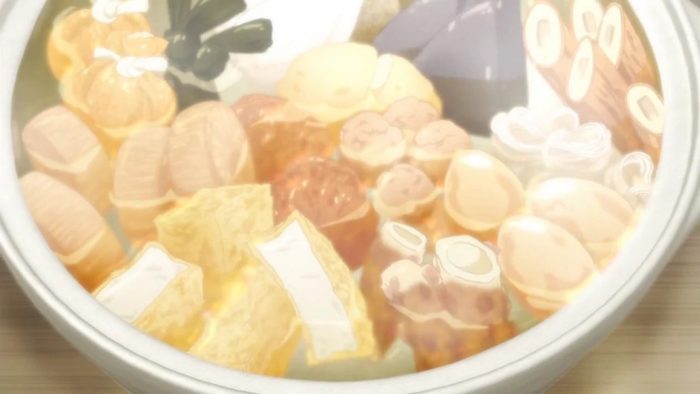
With Christmas behind us, the coldest part of winter is just around the corner for the Northern Hemisphere, including Japan. Northern Japan is already buried in snow, and even more is coming. Most of the rest of the country won’t be far behind with temperatures plummeting. Luckily, there’s plenty of Japanese foods that are made just for staying warm in the cold of winter though, with comforting flavours that are easy on the stomach and warm you up from the inside-out. And great news, a lot of them can be made at home with just a few staple ingredients from your local Asian supermarket that you should invest in anyway if you’re experimenting with Japanese cooking.
So if you’re looking for some Japanese winter foods to warm up with, or are just curious to learn about what many Japanese people enjoy in the winter months, look no further. While there are quite a lot of great Japanese foods to try in the winter, we picked five of the most popular, simple, and comforting ones to check out! If these make you curious (or hungry!) be sure to dig deeper and see what else you can find, because they are just the beginning.
Okayu

Okayu (and no, we don’t mean the HoloLive Gamers catgirl of the same name) is one of the quintessential Japanese comfort foods, and is also one of the most simple. Okayu is a kind of rice porridge. It can also be made in a rice cooker with just rice and water, but the ratio is changed so that there is a lot more water than is used for usual rice. If you’re looking for a little bit more flavour, once the okayu is cooked you can add soy sauce, eggs, scallions, or a pickled plum. It's warm and easy to digest because of its simplicity and perfect when you aren’t feeling too hungry or are just looking for a way to warm up from the inside-out. Okayu is especially great if you have a cold or the flu! Consider it the Japanese version of chicken noodle soup (only, you know, without chicken or noodles).
Yakiimo

Yakiimo takes time to make, but the pay-off is more than worth it. It's a very simple dish; a roasted purple sweet potato. If you want to make them the most traditional way, you take the sweet potato (with the skin still on!), wrap it in foil, and roast it slowly over the fire. Then you just peel back the foil and enjoy eating the potato, skin and all, with its soft and warm, golden centre. The simplicity of this food makes it commonly found all over Japan in the autumn and winter, and they’re especially enjoyed around campfires. Street vendors also sell them cheaply from trucks and stalls, where they’re kept on hot stones to keep them warm until you can enjoy them. Yakiimo is really popular amongst Japanese fan artists, and you can often find fan art of famous anime characters eating them together in the autumn and winter.
Yudofu
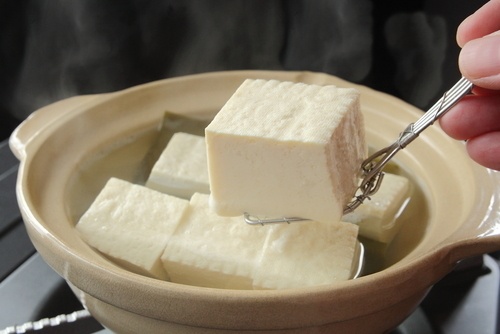
Yudofu is another simple dish that consists of silken tofu cooked in dashi (fish) sauce, and usually flavoured with konbu (kelp). The tofu is cut into cubes and served with either soy sauce and wasabi, or green onions and ponzu sauce. Yudofu comes from the Buddhist diet “shojin-ryori,” famous for being the only vegetarian diet in traditional Japanese food culture. If you are a strict vegetarian or vegan, be mindful that yudofu is made with fish stock, however, so you can make it with a different base broth if you choose to make it at home. Keep in mind that you should choose fresh, quality tofu as your base for making yudofu always, because the taste of the tofu is going to be the strongest! If you don’t choose good tofu, you won’ have nearly as delicious of an end result.
Nabe
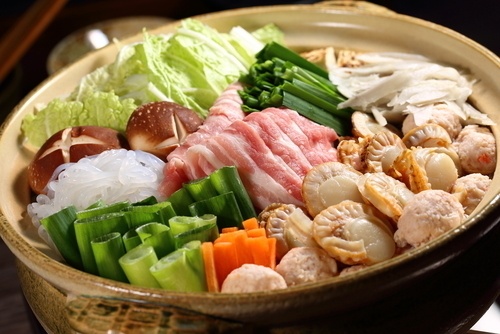
Getting a little more complicated, let’s look at nabe, a traditional Japanese hot pot that is frequently enjoyed in the cold months. The real secret to nabe is that it must be cooked in an earthernware pot for the true experience and to get the flavour just right. Nabe is made from vegetables and meat or seafood stewed for a long time in broth, and usually shared amongst family or friends. One of the best parts about nabe is that you can put whatever you want inside of it, so many regions of Japan have their own special varieties using local ingredients. Nabe is usually enjoyed by a group of people who all share the same big nabe pot and serve themselves out of it, family-style. At nabe restaurants in Japan, customers typically make the nabe themselves, ordering what ingredients they like and cooking it together at the table. Not only is it a warm comfort food but it's also a social experience. Nabe has been featured in many anime, including Precure, Gintama, Love Live!! Sunshine, and Lupin the Third.
Oden
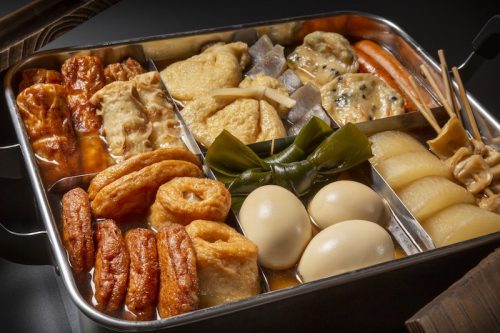
Oden is similar to nabe in that it is many different types of food cooked in broth, but the flavour and ingredients are quite different. All of the foods are cooked in one pot together in a soy sauce and dashi (fish) broth for hours, giving it a distinctly fishy smell and taste. Some of the common foods found in oden are root vegetables like yams and radish, fish cakes, tofu, and eggs. Like nabe, many regions of Japan have their own special foods that they add to oden that are regional. Oden has been around since the Edo period when it was sold by street vendors, and can still be commonly found at convenience stores around Japan. Oden is purchased by the piece, with customers choosing from the shared broth exactly what they want to eat. If you’re looking for oden in an anime, it's in Gourmet Girls Graffiti as a New Year’s dish!
Final Thoughts
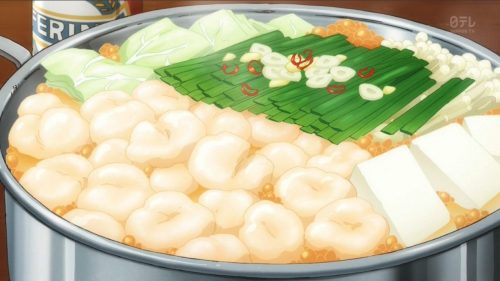
Is your mouth watering yet? Maybe you’re feeling a little warmer inside just thinking about digging into these dishes? Remember, this is just the beginning of amazing Japanese winter foods, so if you’re left wanting more, there’s definitely more to find. But we hope this helped you get started and gave you some great ideas of foods you can try yourself this winter. And if you’re in the Southern Hemisphere, well, we won’t judge you if you eat these even in the middle of summer - they’re just that good!
Have you ever had any of these winter dishes before? Have you ever found one in an anime? Which one would you like to try? Are you going to try making any of these? Do you have another favourite Japanese winter food that we didn’t put on this list? We love hearing all your comments and questions!
Recommended Post

